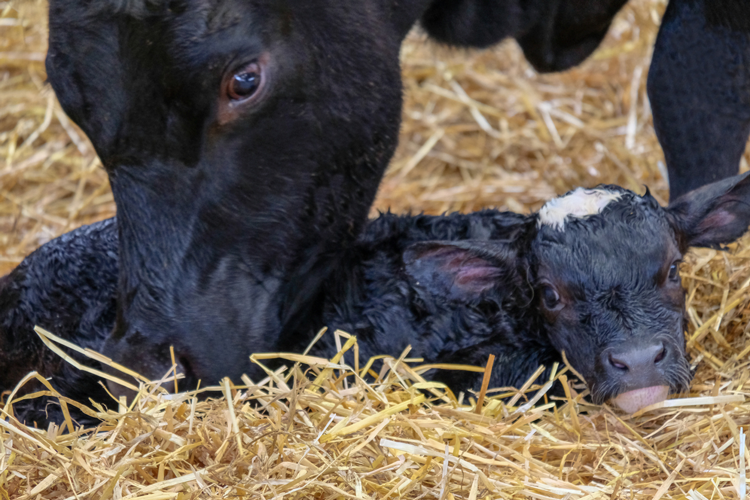
When a cow has a difficult calving that requires assistance and a tough pull, what steps should be taken for the calf and the cow to get both off on the right foot? Veterinarian Joe Armstrong, an educator with the University of Minnesota Extension, talked about some do’s and don’ts of assisted calvings on a recent “The Moos Room” podcast.
“If we can be as uninvolved as possible, that’s the goal,” said Armstrong. If a calving is progressing and looks normal, trust that the cow knows what it is doing. Intervention leads to added stress for the cow. When you see the water bag or feet, set a timer for 30 minutes on cows and one hour for heifers. If there is no progress in that time, Armstrong said then you can help. Patience is key here, he explained. The progress a cow is making may be very little, but as long as there is progress, leave the cow to calve naturally.
If you do need to step in and assist the calving, Armstrong provided recommendations for once that calf is born. “The biggest thing that we’re trying to get them to do is take a big inhale,” said Armstrong. The first thing you can do for this goes back to when the calf is coming out of the cow. If the cow is standing, let the calf hit the ground. Protect the head, but the impact of hitting the ground will cause a shock that may lead to a big breath. When the calf is out, immediately move it away from the end of the cow. Get the calf in a spot where the cow can’t kick you, and then put the calf in a recovery position, sitting sternal on its chest.
From here, use some clean straw to tickle the inside of its nose. You can also press fingers into the septum, which will make the calf want to sneeze or snort. Armstrong also mentioned using your knuckles to press into the last few ribs on the side of the calf. Cold water splashed on its ears or body can also cause a slight startle that leads to a breath. Once the calf takes a breath, let the dam lick the calf and do the rest of the work.
Armstrong shared a common response he sees on farms after a calf is pulled is to hang the calf upside down to drain liquid. He does not recommend this as liquid that drains isn’t coming from the lungs but rather the stomach, and this position makes it harder to breathe.
If you assist a calving and the calf sits up and is breathing well, walk away and let the cow work on cleaning it. Always check for another calf once one is pulled and breathing, and never assume there isn’t another until you check. Armstrong also said to check for any uterine tears and treat them immediately if needed before the cow goes to clean the calf.








